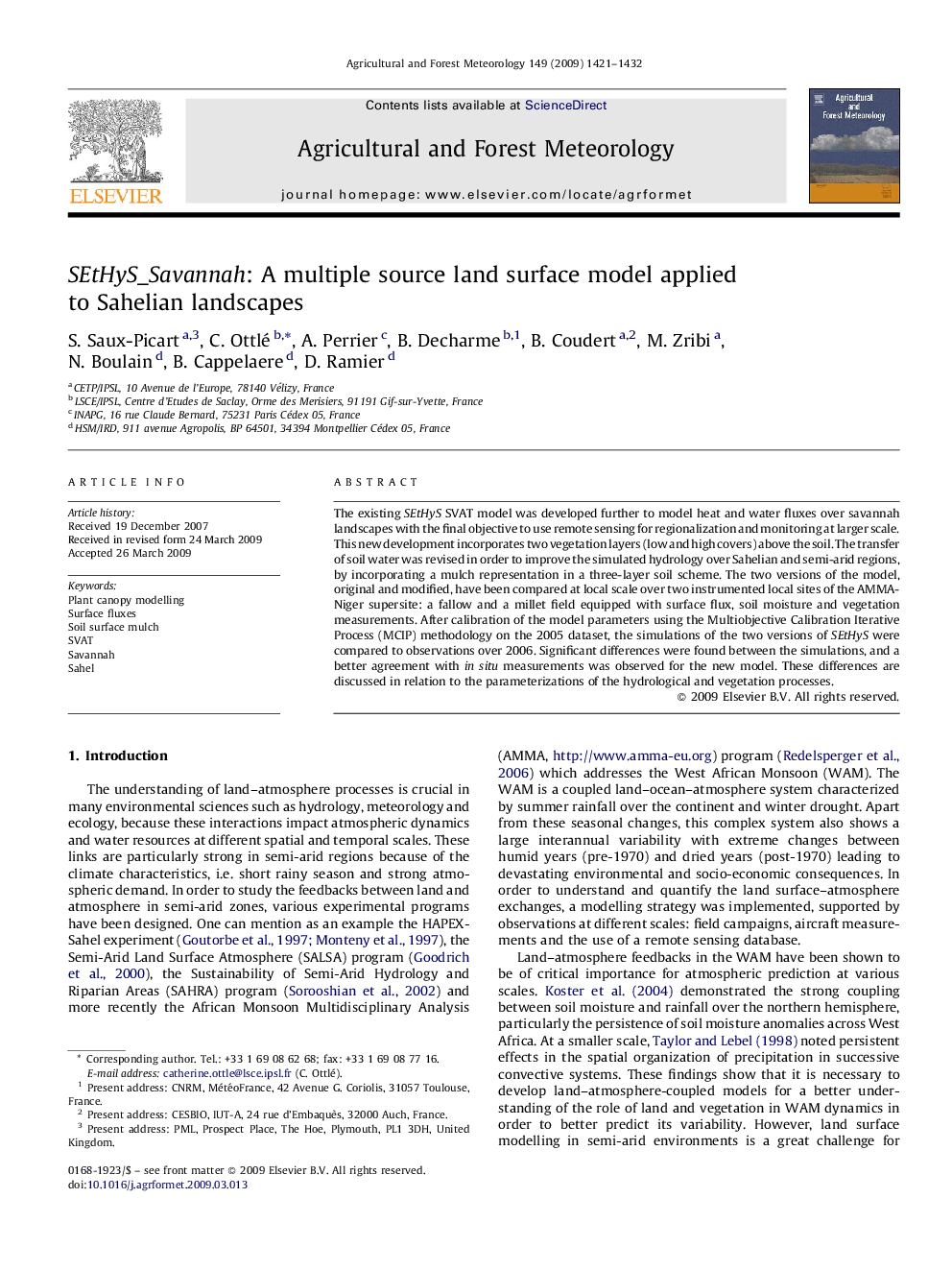| Article ID | Journal | Published Year | Pages | File Type |
|---|---|---|---|---|
| 82327 | Agricultural and Forest Meteorology | 2009 | 12 Pages |
The existing SEtHyS SVAT model was developed further to model heat and water fluxes over savannah landscapes with the final objective to use remote sensing for regionalization and monitoring at larger scale. This new development incorporates two vegetation layers (low and high covers) above the soil. The transfer of soil water was revised in order to improve the simulated hydrology over Sahelian and semi-arid regions, by incorporating a mulch representation in a three-layer soil scheme. The two versions of the model, original and modified, have been compared at local scale over two instrumented local sites of the AMMA-Niger supersite: a fallow and a millet field equipped with surface flux, soil moisture and vegetation measurements. After calibration of the model parameters using the Multiobjective Calibration Iterative Process (MCIP) methodology on the 2005 dataset, the simulations of the two versions of SEtHyS were compared to observations over 2006. Significant differences were found between the simulations, and a better agreement with in situ measurements was observed for the new model. These differences are discussed in relation to the parameterizations of the hydrological and vegetation processes.
